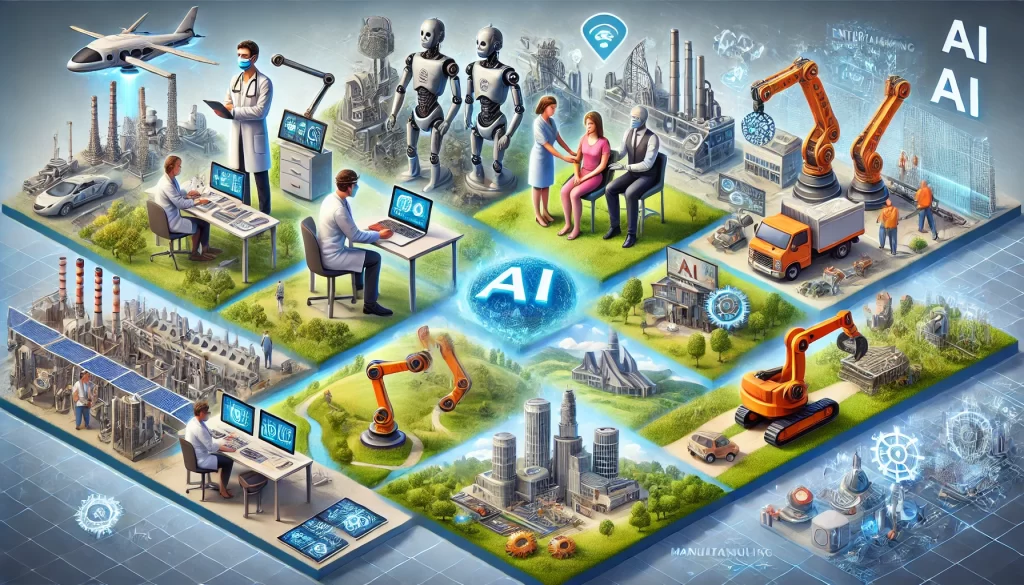Remember the first time you used a GPS to navigate somewhere? That moment you realized you’d never need to unfold a paper map again? Well, that’s where we are with AI right now – it’s becoming an increasingly important part of our lives, transforming everything from healthcare to entertainment.
However, its dual nature — with its potential to do both good and harm — raises important questions. As AI evolves, it is crucial to recognize the opportunities it presents while remaining vigilant about its risks.

The Good Stuff: Transforming Lives for the Better
AI’s impact on accessibility and quality of life cannot be overstated. It’s not just about impressive technology – it’s about real changes in people’s everyday lives.
From assistive robotics to autonomous vehicles, AI is helping individuals with physical disabilities and improving independence. Robotics are assisting the elderly to regain mobility, and rehabilitation technologies are enabling children to walk again. These innovations offer real hope and new possibilities for improving the quality of life.
Furthermore, in areas like construction, AI systems are revolutionizing safety protocols, analyzing potential risks, helping prevent accidents, and ensuring workers return home safely each day. This practical application of AI isn’t replacing human expertise – it’s enhancing it.
The communication landscape has also evolved significantly. AI’s large language models (LLMs) are revolutionizing how we interact with technology. These models can engage in dynamic, human-like conversations, providing emotional support or helping with complex tasks. While not a replacement for human interaction, AI’s ability to assist in brainstorming or offering new perspectives is reshaping how we interact with machines.
What makes these advances particularly significant is their broad reach across industries, extending from healthcare and transportation to entertainment and agriculture, making life easier and more efficient in countless ways.

The Challenges: Hidden Risks and Bias
AI’s potential comes with significant challenges. One crucial issue is the risk of bias in AI systems often stemming from incomplete or non-representative data. This isn’t just about “distorted glasses” – it’s about systematic biases that can perpetuate existing inequalities.
When algorithms are trained on biased datasets, they can produce discriminatory outcomes. For example, if an AI system is only trained on images of people with blonde hair, it may fail to recognize individuals with other hair colors, leading to unfair treatment in real-world applications. AI systems with inherent biases can perpetuate racial or gender inequality, and these rushed or poorly designed applications highlight the importance of addressing data gaps.
Another challenge posed by AI is the growing reliance on it, especially in the form of LLMs. Let’s be honest – we’re all getting a little too comfortable letting AI do our thinking for us! Over-dependence on these technologies risks diminishing human critical thinking. When users rely on AI to generate content without scrutiny, they might unknowingly accept biased information. AI must complement, rather than replace, human intelligence, ensuring users remain critical of AI-generated outputs.
The hidden cost of AI isn’t just computational – it’s environmental too! Every time we train massive AI models, countless servers work overtime, consuming energy and generating heat. While AI helps us solve complex problems, we need to be thoughtful about making these digital brains more energy-efficient. After all, a smarter future shouldn’t come at the expense of our planet’s health.
A World Shaped by AI
The most unsettling aspect? AI and its capacity to influence human decision-making at every level. From the shows we watch on streaming services to our political opinions, AI’s recommendation algorithms subtly shape our daily lives. The danger lies in the unregulated development of these systems, often geared toward maximizing corporate profits rather than enhancing human well-being.
And yes, let’s talk about jobs. The effect on employment is complex. AI replaces more human tasks, and job displacement becomes a genuine concern. Automation in industries like construction may eliminate jobs traditionally held by humans, leading to workforce anxiety. While AI is making some roles obsolete, it’s also creating new opportunities. New roles are emerging, creating demand for jobs that didn’t exist before.
The key challenges lie in developing comprehensive retraining programs, ensuring equal access to these opportunities across different socioeconomic groups, and helping workers adapt to roles that increasingly involve collaboration with AI systems.
Lastly, AI’s ability to generate convincing narratives raises ethical concerns. It could erode authentic human connections, as people might increasingly turn to AI for emotional support or guidance. More alarmingly, AI tools could become powerful propaganda engines, shaping public opinion and further polarizing societies.

A Dual-Edged Sword
Here’s the thing: AI’s evolution offers both incredible potential and significant risks. While it promises to improve lives, it also requires careful oversight to prevent harm. The future isn’t about AI vs. humans; it’s about finding the sweet spot where technology enhances our humanity rather than diminishing it. It’s about using AI like a good spice in cooking – enough to enhance the flavor, but not so much that it overwhelms the dish.
As we ride this wave of innovation, we need to stay both hopeful and street-smart. Because in the end, the best future isn’t about robots taking over, but about humans and AI working together, each bringing their own special flavor to the table.
It’s about using AI to amplify what makes us human, not replace it.
